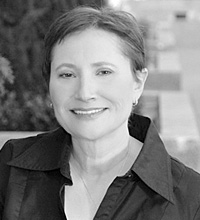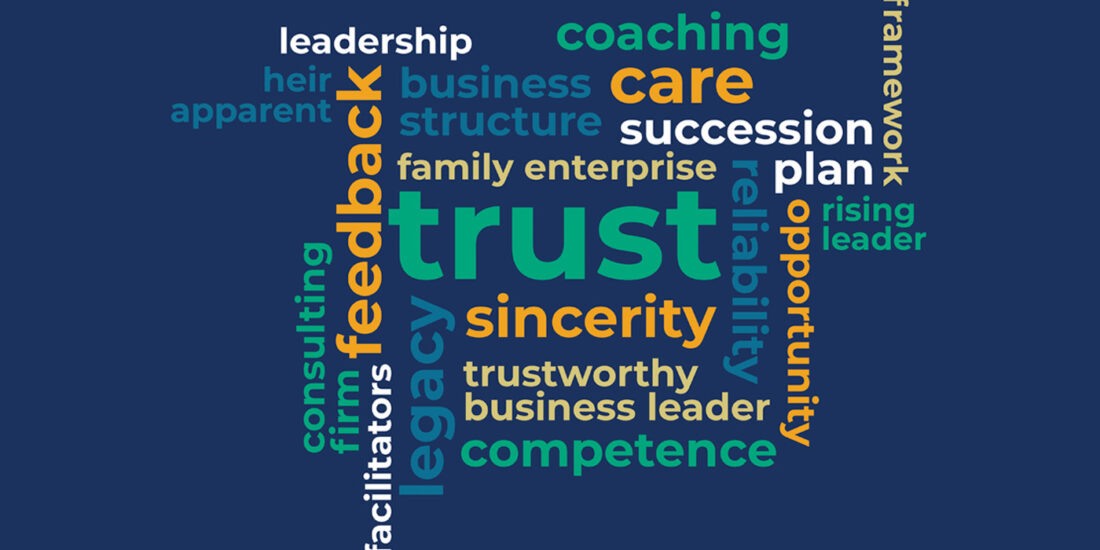Position Open: Chief Collaboration Officer (CCO)
The Foster Family Conundrum
The Foster family was sitting around its kitchen table just as it always had to discuss the upcoming promotion for their Fall line of pet accessories. The family had been either manufacturing or importing anything pet owners ever wanted for their domestic animals since the early 1960s. They had a tradition of celebrating the new designs and pre-orders first at Dad’s house and now the house he shares with his third wife, Selinda.
Out of three siblings and two spouses, Joe was the CEO. One of the spouses, Craig, headed up distribution and Dad served as chairman of the board. The other siblings and married-ins, while interested in the business, did not have a connection to operations or the industry. They simply collected their distributions, celebrated the company’s continued success, and, occasionally, yet fleetingly, worried what might happen if something happened to Joe and/or Dad. After all, Dad had done such a great job of looking after the company and the family and now Joe seemed to be doing the same.
However, Henry, the middle sibling felt something seemed off at this gathering—Dad wasn’t celebrating. He was quiet and pensive as opposed to his usual joviality. Why wasn’t Susan, who picked up on everything, picking that up? What was going on? Henry finally decided to take a risk and spoke out: “Dad, if we are doing so well, why don’t you seem pleased?”
James Foster looked steadily first at Henry, then at Susan, and said: “I am happy we are having a good year, but I am worried about whether we can sustain it; whether our business can survive through your generation. Until recently, I was thinking about beginning to step back from the company and travel more with Selinda, but now I believe I need to put that plan on the back burner until I feel the future of our business is more secure. I see changes in the industry on the horizon. It is not just because we can’t keep up with new technology and lower manufacturing costs coming out of China. It is also that there is increasing competition. The way the customer buys our products is changing to online vs. in a store and we are now competing in a global market. I don’t know how much longer we can count on this business to provide our family with income. I know the two of you have your own careers, but we are getting short on ideas and may need your help.”
Everyone was shocked. What was he referring to? Henry was a professor of anthropology and Susan managed a chain of retail stores. What could they possibly contribute? Susan asked: “Dad, I am confused—what would change if Henry and I got involved? How could we help?” Without missing a beat, James said: “We need new ideas, new perspectives, our business model could be dying, and Joe, Craig and I are simply too close, too entrenched and frankly a bit paralyzed.” Silence. Mouths wide open—he had their attention.
Getting to Unstuck from Stuck
More and more we hear this common story in our practice. The external world is moving quickly as manufacturing moves around the world. Technology is rapidly changing everything about wholesale, retail, and point of sale. Creativity, discovering and pursuing new opportunities is no longer a choice, it is a necessity. James Foster was reaching out for new perspectives—hoping that within his family, a new idea would emerge that would move them beyond their current stasis.
While internally, within the family, Dad was looking for an infusion of something fresh, he also needs to look externally. He and the company need fresh ideas about what the business will need to be doing to ensure continued growth. He will need help to get focused, not from fear, but in an objective analytical way that would encourage the family as shareholders and as operators to look at the reality of their industry and explore opportunities that will line up with their core competencies.
Clearly, the Fosters are at a crossroads. What will they need to do as family stakeholders as they think through the challenges they face? In order to get unstuck, they need to shift from being reactive to proactive by grappling with questions such as:
- Are we able objectively to analyze our own internal capacity to oversee and grow our business?
- What do we need to do to ready ourselves to deal with a fast-paced and changing external environment?
- Do we have the appetite, the capability and the stamina to weather these significant changes?
While they may not be able to control everything, potentially, if they can feel more prepared, they will likely feel less out of control.
An obvious step is to hire a business coach or an industry expert. However, if the family is in stasis, it may feel overwhelmed by experts who, sure of what needs to be done, inform the family, but are not sensitive to or understand the Foster family dynamics. James might be encouraged to consider whether it is time for him to step back from the business. After all, he may be part of what might be keeping the business in stasis. In truth, there may be a need for several different types of advisory.
A generational transition is in play as well as the growing complexity of the family’s relationship to their enterprise–all of which affects how and what decisions they make. Therefore the family might get more stuck rather than unstuck with the introduction of expert advisors unless it actually has a plan to deal with them and their advice.
Shifting the Mindset: Getting Advisors to Cooperate, Collaborate and Team
Likely, a family such as the Fosters would have “best of breed” loyal advisors in place, advising them on aspects of the business, estate planning, corporate and personal taxes, liability, etc. And, they, like many other family enterprises, have the requisite independent board members on their board. However they are pulled from Dad’s circle of contacts and rather than push back or offer new strategies they tend to rubber stamp whatever James and Joe come up with.
When James directed his statements to his two uninvolved stakeholders, he was really speaking to his entire family, saying that their enterprise needs all their collective energy, commitment and core competencies in the mix as they look at their opportunities and options. A broad family strategy will be needed. Difficult, soul-searching conversations need to occur to push them and their advisors to think differently about the reality of their family legacy business and get prepared for change.
Where and at what point, does the silo approach of advice-giving get pulled together to direct a cohesive family strategic plan? What is likely to get in the family and/or the advisor’s way of executing the plan? All too often each of the advisors is thinking someone else will do the quarterbacking. Advisors want to solve problems and produce consistent air-tight advice, not spend their time coordinating their peers or helping the family evaluate the benefit, use and performance of each of their advisors. After all, they signed on to give expert advice, not herd cats.
Steering Collective Energy
Many of us may have heard this story before, and are clear about what the family needs. My guess is we would all agree there are many ways to resolve their current situation, and different perspectives can by synergistic and expansive rather than narrow and one-dimensional. However, all too often professionals tend to get anxious and worry their value will be diminished unless the answer/solution comes from him/her. Unwittingly, by needing to be the smartest one in the room, a competitive environment can be created. Further, it takes time to consult with others and it can be frustrating and even a waste of time. Professionals are busy and time wasted can be money lost.
All too often, collaboration and/or cooperation are viewed as informing others or copying them on decisions and communication. The advisor’s need to show value can often overwhelm his/her capacity to strategize and seek input from others. So, rather than actually confer with others, an email is sent with a strategy laid out from one advisor’s perspective directly to the client copying the other advisors with no invitation to engage in a discussion. Other perspectives are not considered or debated—a missed opportunity to serve the client.
Unfortunately, the client is forced to sift through the disparate perspectives of the advisors rather than the advisors taking responsibility for making the sum of their advice larger, broader and more innovative by delivering a collaborative solution. While there are articles published in the Practitioner and many others spelling out the how to’s of executing collaboration and teamwork amongst professionals, what is not necessarily addressed is the mindset and behaviors required. Sometimes the bigger task in assisting a family is not creating or facilitating plotting out a road map for the future as much as it is helping figure out the appropriate ways in which the family might deal with multiple advisors in achieving that roadmap. It can be a big task to lead the advisors in a team approach that is coordinated, cooperative, and collaborative and assists the family enterprise to manage the tension that ambiguity and complexity produce.
What then about enticing advisors to think about a new position that will have great intrinsic and extrinsic reward? Only apply if you want the challenge of “Chief Collaboration Officer” (CCO) and believe it is crucial to client service delivery.
Some Tips for becoming a CCO
- Park your ego at the door. Creative solutions require that no one person owns the process. Great ideas come from putting great minds together.
- Invest in creating something new by contributing to a shared goal rather than purely supporting your singular goal. Self-interest is never attractive and it is a sure way of derailing the creative process.
- Be a student of the other advisor’s expertise and motivation. Without understanding the outcome each advisor wants, there will be no way to come to a balanced perspective.
- Take on the mindset of a true collaborator. Today’s family enterprise needs many layers of talented people to assist in navigating a rapidly changing world.
- As parents, top executives and the older next generation, think of yourself as a role model. Often the best learning comes from experience and observation of how others navigate relationships and problem solving.
The modern day and future enterprising family needs a modern day approach from its advisors that is less expert driven, more multidisciplinary and executes collaborative, cooperative and teamwork behavior.
About the contributor:
 Fran Lotery is a senior consultant with Relative Solutions. She has more than 30 years of experience working with professional firms, family enterprises, owners of closely-held companies and non-profit institutions on issues of governance, board development, conflict management, organizational change, leadership development and executive coaching. Fran is an FFI Fellow and can be reached at flotery@relative-solutions.com.
Fran Lotery is a senior consultant with Relative Solutions. She has more than 30 years of experience working with professional firms, family enterprises, owners of closely-held companies and non-profit institutions on issues of governance, board development, conflict management, organizational change, leadership development and executive coaching. Fran is an FFI Fellow and can be reached at flotery@relative-solutions.com.




